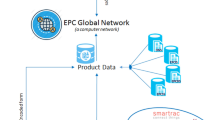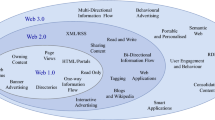Abstract
With the rapid development of technology, the issues about blockchain are getting more and more attention from scholars. In order to study the operation of the blockchain system, this paper simulated the transaction confirmation process of a blockchain system with two miners. Combining with practice, factors such as adverse transactions, impatience phenomena of transactions, fault repairable conditions of the mining process and a spare miner are considered. An M/(M\(_1\),M\(_2\))/1 vacation queueing model with negative customers, impatient customers, optional services, repairable faults and a spare server is established. The stationary distribution of the system is obtained by using the matrix-geometric solution method, and expressions of the average confirmation time of transactions and other performance indexes are given. The influence of each parameter on the performance indexes of blockchain system is analyzed by using MATLAB software. Revenue function and equilibrium sleep rate of miners are discussed for optimizing the blockchain system.





Similar content being viewed by others
References
Shen X, Pei QQ, Liu XF (2016) Survey of blockchain. Chin J Netw Inf Secur 2(11):11–20 (in Chinese)
Karthika V, Jaganathan S (2019) A quick synopsis of blockchain technology. Int J Blockchains Cryptocurrencies 1(1):54–66
Nakmoto S (2008) Bitcoin: a peer-to-peer electronic cash system. https://bitcoin.org/bitcoin.pdf
Swan M (2015) Blockchain thinking: the brain as a decentralized autonomous corporation. IEEE Technol Soc Mag 34(4):41–52
Tapscott D, Tapscott A (2017) How blockchain will change organizations. Mit Sloan Manag Rev 58(2):10–13
Zhu XX, He QS, Guo SQ (2018) On the role of blockchain technology in supply chain finance. China Business and Market 32(3):111–119 (in Chinese)
Garcia AR, Garcia PHR (2019) Cryptocurrencies: the communication inside blockchain technology and the cross-border tax law. Int J Blockchains Cryptocurrencies 1(1):22–41
Shah B, Shah N, Shakhla S, Sawant V (2018) Remodeling the healthcare industry by employing blockchain technology. In: 2018 International Conference on Circuits and Systems in Digital Enterprise Technology (ICCSDET) Kottayam, India, pp 1–5
Om P, Bashir A, Vinay T, Surendra S (2019) Key management for blockchain technology. ICT Express. https://doi.org/10.1016/j.icte.2019.08.002
Chen Y, Xie H, Lv K, Wei SJ, Hu CZ (2019) A blockchain-based privacy-preserving distributed database toward user behaviors in social networks. Inf Sci 501:100–117
Zhao Y, Liu Y, Tian A, Yu Y, Du XJ (2019) Blockchain based privacy-preserving software updates with proof-of-delivery for internet of things. J Parallel Distribu Comput 132:141–149
Alberto AB, Alfio L, Giacomo M, Salvatore Q (2019) On the use of blockchain technologies in WiFi networks. Computer Netw. https://doi.org/10.1016/j.comnet.2019.07.011
Liu Y, He D, Obaidat MS, Kumar N, Khan MK, Raymond Choo KK (2020) Blockchain-based identity management systems: a review. J Netw Computer Appl. https://doi.org/10.1016/j.jnca.2020.102731
Hao W, Zeng J, Dai X, Xiao J (2019) BlockP2P: enabling fast blockchain broadcast with scalable peer-to-peer network topology. In: Miani R, Camargos L, et al. (eds) Green, Pervasive, and Cloud Computing. GPC 2019. Lecture Notes in Computer Science, Springer, Cham, 11484, pp 223–237
Zhou W, Wu X (2006) Survey of P2P technologies. Computer Eng Design 27(1):76–79 (in Chinese)
Raul A, Kalyanaraman S, Yerande K, Devadkar K (2019) Blockchain technology for decentralized data storage on P2P network. In: Wang J, Reddy G, Prasad V, Reddy V (eds) Soft Computing and Signal Processing. Advances in Intelligent Systems and Computing, Springer, Singapore, 900:101-110
Du Y, Li X, Cheng S, Guo Y (2019) Blockchain based distributed network architecture. In: Yu Q (ed) Space Information Networks. SINC 2018. Communications in Computer and Information Science, Springer, Singapore 972, pp 10–14
Wu Y, Li J (2019) Evolution process of blockchain P2P network protocol. Appl Res Comput 36(10):2281–2286 (in Chinese)
Hao W, Zeng J, Dai X et al (2020) Towards a trust-enhanced blockchain P2P topology for enabling fast and reliable broadcast. IEEE Trans Netw Serv Manage 17(2):904–917
Yu C, Jiang X, Yu S, Yang C (2020) Blockchain-based shared manufacturing in support of cyber physical systems: concept, framework, and operation. Robotics Computer Integrated Manuf. https://doi.org/10.1016/j.rcim.2019.101931
Lee Y, Lee KM, Lee SH (2020) Blockchain-based reputation management for custom manufacturing service in the peer-to-peer networking environment. Peer-to-Peer Netw 13:671–683. https://doi.org/10.1007/s12083-019-00730-6
Srivastava R (2019) Mathematical assessment of blocks acceptance in blockchain using Markov model. Int J Blockchains Cryptocurrencies 1(1):42–53
Li QL, Ma JY, Chang YX (2018) Blockchain queueing theory. In: Chen X, Sen A, Li W, Thai M (eds) Computational Data and Social Networks. CSoNet 2018. Lecture Notes in Computer Science, vol 11280. Springer, Cham, pp 25–40
Li QL, Ma JY, Chang YX, Ma FQ, Yu HB (2019) Markov processes in blockchain systems. Comput Social Netw 6(5):1–28
Kasahara S, Kawahara J (2019) Effect of bitcoin fee on transaction confirmation process. J Ind Manage Opt 15(1):365–386
Kawase Y, Kasahara S (2017) Transaction-confirmation time for bitcoin: a queueing analytical approach to blockchain mechanism. In: International Conference on Queueing Theory and Network Applications pp. 75–88
Li JJ, Yuan Y, Wang S, Wang FY (2018) Transaction queuing game in bitcoin blockchain. In: IEEE Intelligent Vehicles Symposium, Changshu. https://doi.org/10.1109/IVS.2018.8500403
Taylor PJ, Dargahi T, Dehghantanha A, Parizi RM, Choo KR (2019) A systematic literature review of blockchain cyber security. Digital Commun Netw. https://doi.org/10.1016/j.dcan.2019.01.005
Mohanta BK, Jena D, Panda SS, Sobhanayak S (2019) Blockchain technology: a survey on applications and security privacy challenges. Internet of Things. https://doi.org/10.1016/j.iot.2019.100107
Chicarino V, Albuquerque C, Jesus E, Rocha A (2020) On the detection of selfish mining and stalker attacks in blockchain networks. Ann Telecommun 75:143–152
Xu X, Wang X, Song X, Li X (2018) Fluid model modulated by an M/M/1 working vacation queue with negative customer. Acta Mathe Appl Sinica, English Ser 34:404–415
Yue DQ, Ma JW, Ma JM, Yu J (2009) Analysis of a repairable queueing system with spare servers. J Shandong Univ (Nat Sci) 44(3):39–44 (in Chinese)
Feng YG (2011) \(\text{ M}^{X}\)/(\(\text{ G}_1,\text{ G}_2\))/1 queueing system with balking and negative customer arrivers under single vacation policy. J Fuyang Teachers College (Nat Sci) 28(2):18–21+106 (in Chinese)
Sedlmeir J, Buhl HU, Fridgen G, Keller R (2020) The energy consumption of blockchain technology: beyond myth. Bus Inf Syst Eng. https://doi.org/10.1007/s12599-020-00656-x
Ghosh E, Das B (2020) A study on the issue of blockchain’s energy consumption. In: Chakraborty M, Chakrabarti S, Balas V (eds) Proceedings of International Ethical Hacking Conference 2019. eHaCON 2019. Advances in Intelligent Systems and Computing, Springer, Singapore 1065, pp. 63–75
Hassani H, Huang X, Silva ES (2019) Big data and blockchain. Fusing big data, blockchain and cryptocurrency. Palgrave Pivot, Cham, pp 7–48
Yin CX, Jin SF (2018) An energy-saving strategy based on multi-server vacation queuing theory in cloud data center. J Supercomput 74:6766–6784
Li C, Tang J, Luo YL (2018) Multi-queue scheduling of heterogeneous jobs in hybrid geo-distributed cloud environment. J Supercomput 74:5263–5292
Schellhaas H (1999) A modified kolmogorov-smirnov test for a rectangular distribution with unknown parameters: computation of the distribution of the test statistic. Stat Pap 40(3):343–349
Tian NS, Yue DQ (2002) The quasi birth and death process and matrix-geometric solution. Science Press, Beijing (in Chinese)
Wu DA, Takagi H (2006) M/G/1 queue with multiple working vacations. Perform Eval 63(7):654–681
Yu SL, Liu ZM, Wu JB (2006) Equilibrium strategies of the unobservable M/M/1 queue with balking and delayed repairs. Appl Math Comput 290:56–65
Acknowledgements
This work was supported in part by the National Natural Science Foundation of China under Grant Nos. 61973261, 61872311, Natural Science Foundation of Hebei Province under Grant Nos. A2020203010, A2018203088, Key Foundation of Higher Education Science and Technology Research of Hebei Province under Grant No. ZD2017079.
Author information
Authors and Affiliations
Corresponding author
Ethics declarations
Conflict of interest
The authors declare that they have no conflict of interest.
Additional information
Publisher's Note
Springer Nature remains neutral with regard to jurisdictional claims in published maps and institutional affiliations.
Rights and permissions
About this article
Cite this article
Fan, J., Ma, Z., Zhang, Y. et al. Analysis of blockchain system based on \(\hbox {M}/(\hbox {M}_1,\hbox {M}_2)/1\) vacation queueing model. J Supercomput 77, 3673–3694 (2021). https://doi.org/10.1007/s11227-020-03408-6
Published:
Issue Date:
DOI: https://doi.org/10.1007/s11227-020-03408-6




